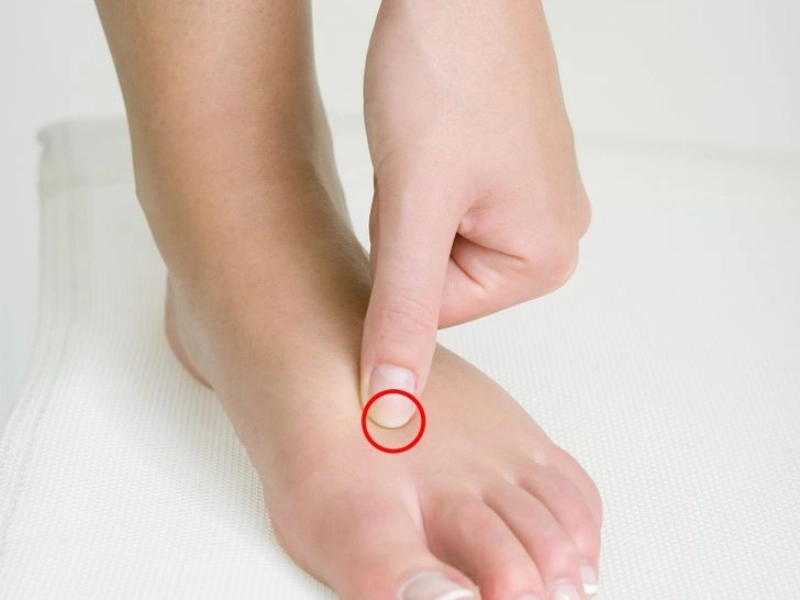Advertisement
5.The Big Rushing Point,

Advertisement
The Big Rushing Point, also known as the Yongquan acupressure point, is located approximately 1.5 inches behind the base of the big toe and the second toe. This specific point on the foot is considered to be a highly influential and versatile pressure point in traditional Chinese medicine.
Identifying the exact location of the Big Rushing Point can be done by first locating the base of the big toe and the second toe. From there, measure approximately 1.5 inches directly behind these two toes, and you will find the target area. This point is often described as being situated in the depression or "valley" between the two toes.
When the Big Rushing Point is stimulated, either through acupressure, massage, or other techniques, it is believed to have the potential to provide relief for a variety of health concerns. Headaches, eye fatigue, and foot cramps are some of the most commonly associated conditions that are thought to be alleviated by the activation of this pressure point. Additionally, the stimulation of the Big Rushing Point is also believed to aid in improving concentration and overall mental focus.
To stimulate the Big Rushing Point, one can simply hold the area with firm, steady pressure for approximately one minute. This gentle but firm pressure is believed to help promote the flow of energy, or "qi," within the body, which in turn can help to restore balance and promote healing.
The use of the Big Rushing Point in traditional Chinese medicine is based on the principles of acupuncture and the belief that the body's energy pathways, or meridians, can be influenced through the stimulation of specific points. By targeting the Yongquan point, practitioners aim to address imbalances or blockages within the body's energy system, which they believe can contribute to various physical and emotional challenges.
While the scientific evidence supporting the efficacy of acupressure and other energy-based therapies for conditions like headaches, eye fatigue, and foot cramps is still being explored, many individuals have reported positive experiences with the use of the Big Rushing Point. Some studies have suggested that the stimulation of this point may help to improve circulation, reduce inflammation, and alleviate symptoms associated with a variety of health concerns.
It is important to note that the use of the Big Rushing Point, or any other acupressure technique, should be done with caution and under the guidance of a trained and experienced practitioner. Improper or excessive stimulation of the point could potentially lead to adverse effects, and individuals with certain medical conditions may need to exercise caution or seek professional advice before attempting to self-treat using this method.
In conclusion, the Big Rushing Point, or Yongquan acupressure point, is a significant pressure point located approximately 1.5 inches behind the base of the big toe and the second toe. This point is believed to have the potential to provide relief for headaches, eye fatigue, foot cramps, and aid in improving concentration when stimulated with firm, steady pressure for one minute. The use of this point in traditional Chinese medicine is based on the principles of energy flow and the belief that the body's energy system can be influenced through the targeted stimulation of specific points.
